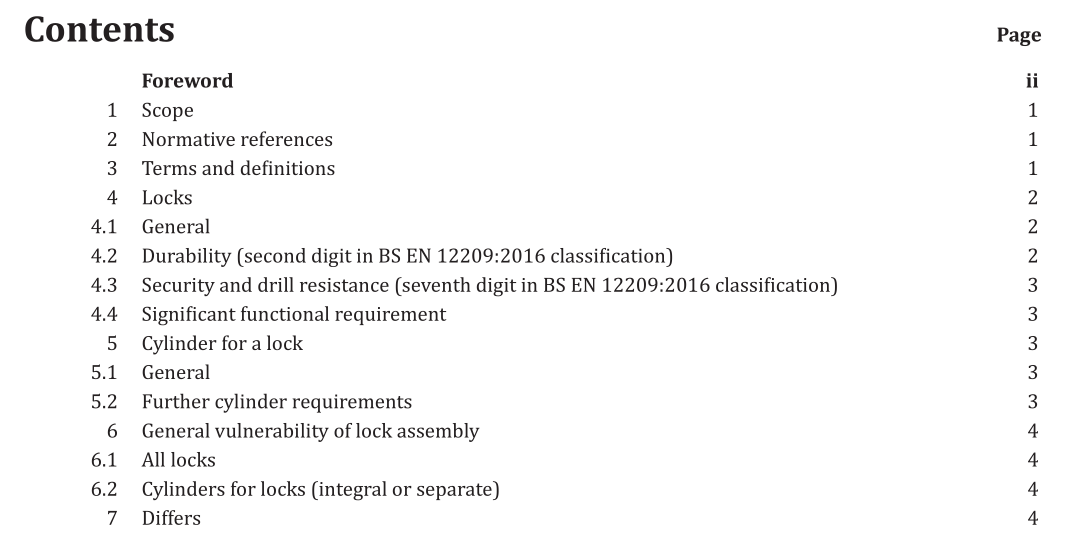BS 3621:2017 pdf download.Lock assemblies operated by key from both the inside and outside of the door
1 Scope
This British Standard specifies performance requirements and test methods for a thief-resistant mechanically operated single-point lock assembly (including locking plates, fixing screws, fitting instructions, cylinders and protective furniture where appropriate) that: a] incorporates a lock conforming to BS EN 12209:2016 that can be locked from both sides with a key thereby only allowing key egress; and b] is used in doors, window doors and entrance doors in buildings. This standard does not cover thief-resistant lock assemblies that provide keyless egress, i.e. lock assemblies that can always be unlocked from the inside without the need for a key, or lock assemblies that provide a secure (no egress) mode in addition to keyless egress. NOTE 1 Thief-resistant lock assemblies that provide keyless egress or assemblies that provide a secure (no egress) mode in addition to keyless egress are specified in BS 8621 and BS 10621 (respectiely), because they are sufficiently different in terms of what they offer for means of escape from fire) and security. NOTE2 It is possible that lock assemblies conforming to this standard might not be suitable for use on doors constructed. from certain types of material, e.g. plastic or aluminium. See 9.2, which specifies the information to be provided on the marking on the packaging of the lock assembly.
The assessment shall be undertaken by a panel of three expert assessors qualified in accordance with Annex B. Each expert shall undertake an individual assessment and report back independently. Each member of the panel shall report the test sample as having satisfactorily withstood the test, or (for A.6) where a suitable test key cannot be manufactured due to the design of the product, each expert shall confirm that the product is not vulnerable to the attack method described in this annex. NOTE The test is intended to assess the general vulnerability of a lock to an attack using knowledge, skill and professional ability. It is not intended to assess the lock’s ability to resist attack involving significant force or by the use of tools only available to locksmiths. Where an individual lock has more than one locking mechanism, all mechanisms accessible and operable from the outside face of the door shall be subject to assessment.
Where the lock assembly includes a cylinder, six additional cylinder assemblies shall be submitted. Two additional samples shall be supplied to each assessor. Sample cylinders shall have combinations in which all step heights are in the mid-range, and are as close together as possible, but which also conform to the manufacturer’s specification and the requirements of BS EN 1303:2015. The cylinders shall be supplied with test keys as detailed in A.6.
BS 3621:2017 pdf download
